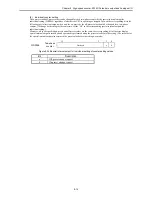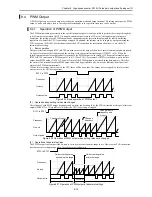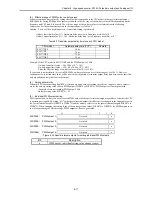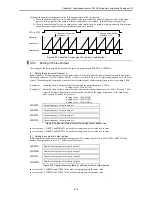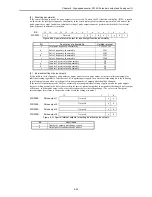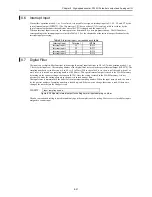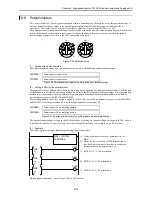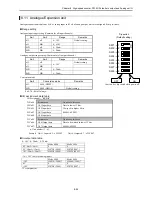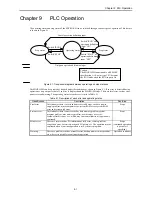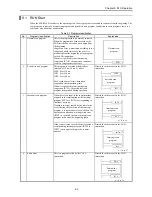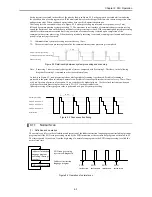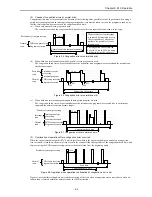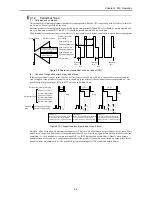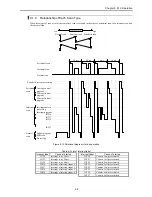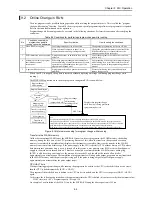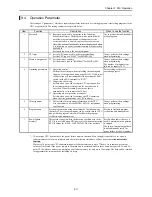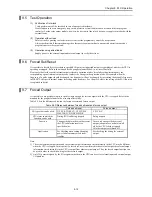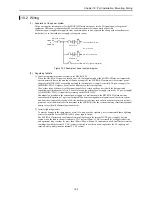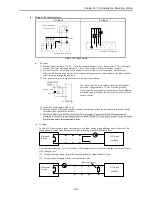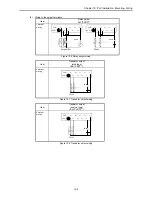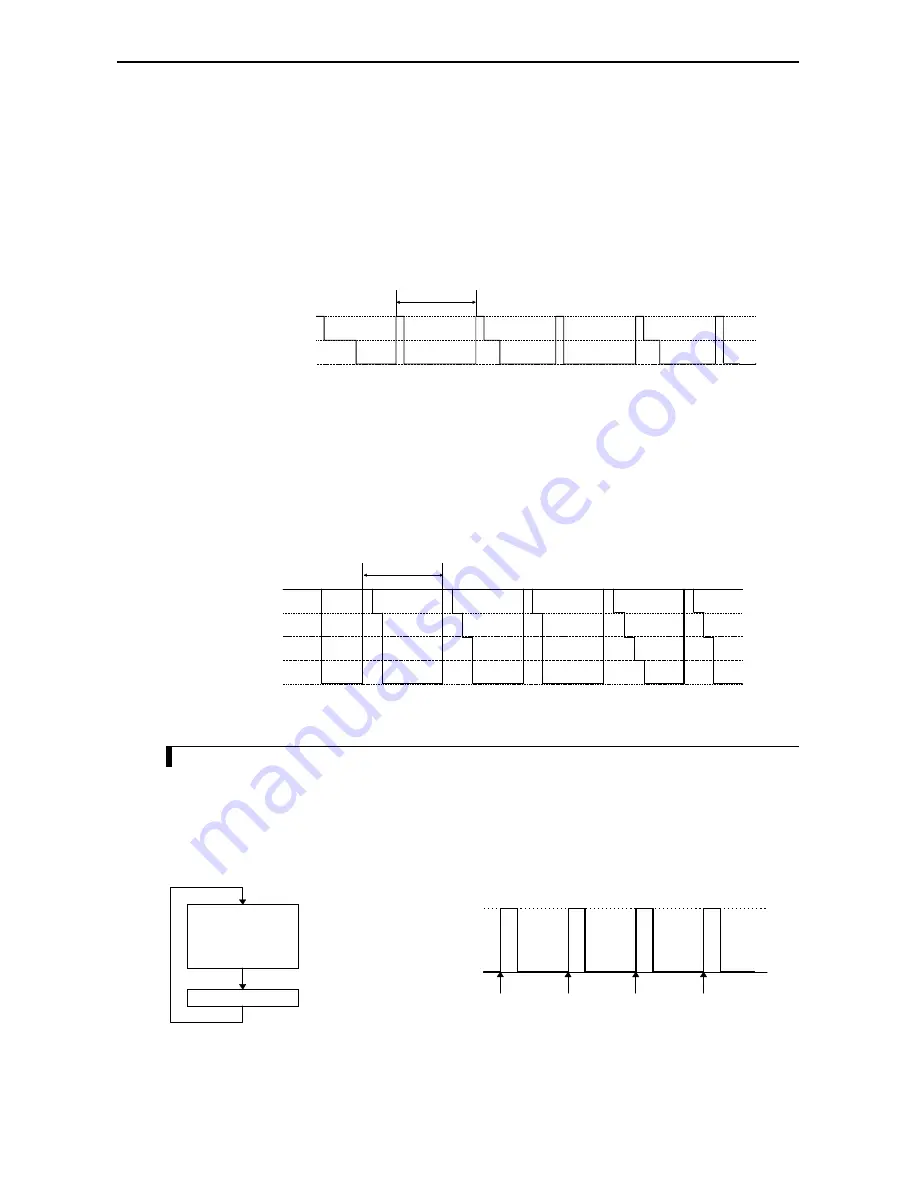
Chapter 9 PLC Operation
9-3
Each program is executed in the order of the priority shown in Figure 9.2. Each program is executed while monitoring
the execution time of each program area. If the monitored time exceeds the specified time, this causes a congestion error
and operation stops. When continued operation has been specified, operation continues.
The timing for scan execution is shown in Figure 9.2. System processing is performed at set periods (every 5 ms),
followed by communication system processing. *1 The maximum execution time of communication system processing
equals the duration of time until the next periodical system processing is started. If the communication system processing
ends before the maximum execution time is up, execution of scan processing is started upon completion of the
communication system processing. When the next periodical processing is executed, scanning is performed until the next
periodical processing is executed.
*1:
Communication system processing is executed every 10 ms.
*2:
The execution of scan processing starts after the communication system processing is completed.
5 ms
Periodic system processing
Communication system processing
Scan processing
1]
2]
1]
2]
Figure 9.2 Relationship between system processing and scanning
Note: Processing 1 takes extremely short period of time as compared with Processing 2. Therefore, in the following
diagram Processing 1 is omitted in order to avoid complexity.
As shown in Figure 9.3, scan processing is done while periodical scanning is performed. Periodical scanning is
processed at the point when switching to normal scan. Periodical scans are performed at intervals of every 10 ms, 20 ms,
or 40 ms. In terms of priority of execution, 10 ms scans have the highest priority. Use the refresh instruction when you
wish to perform data processing for the external I/O (X, Y) in the periodical scan.
Update processing of timer progress value is performed as a part of system processing.
10 ms
System processing
Periodic scan (10 ms)
Periodic scan (20 ms)
Periodic scan (40 ms)
Normal scan
Figure 9.3 Scan execution timing
9.1.1
Normal Scan
(1)
Definition and operation
The normal scan refers to the calculations and execution of the ladder/instruction language program (excluding interrupt
programs) until the END scan processing caused by the END instruction or the execution of programs written in Pro-H.
The time required for one scan, from the beginning of a normal scan program to the END scan processing, is called the
normal scan time.
Figure 9.4 Operation of normal scan
Ladder or instruction
language program
END scan processing
(system self-diagnosis)
END scan processing
Ladder or instruction
language program
(excluding interrupt
program)
END
instruction
END
instruction
END
instruction
END
instruction
Summary of Contents for HIDIC MICRO-EH
Page 1: ...HITACHI PROGRAMMABLE CONTROLLER APPLICATION MANUAL NJI 350B X ...
Page 12: ...MEMO ...
Page 14: ...Chapter 1 Features 1 2 MEMO ...
Page 50: ...Chapter 4 Product lineup and wiring 4 18 MEMO ...
Page 196: ...Chapter 5 Instruction Specifications 5 146 ...
Page 263: ...Chapter 11 Communication Specifications 11 10 MEMO ...


